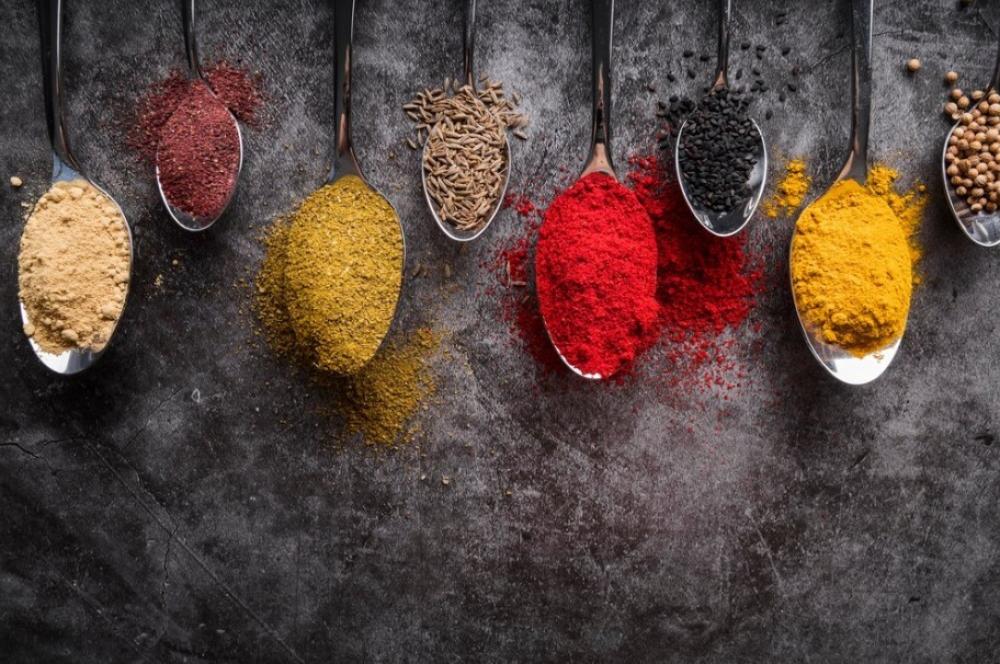
Learn about the types of spices and their uses
The search for spices is a journey through the ages and cultures where they have played a vital role in adding flavour and providing health benefits to foods. From precious saffron to fiery chili peppers, each type of spice carries within it a story, history and secrets on how to transform ordinary dishes into exceptional culinary experiences. Learn about the types of spices and their uses to open up new horizons in the world of cooking where flavours intertwine to reflect cultural diversity and popular legacies from every corner of the world. Join us in this exciting discovery of spices and their unique benefits, and get ready to discover new ways to enrich your dishes and add a touch of magic to your table.
The best types of spices
When we talk about the best types of spices for food, we are referring to a variety of flavors and fragrances that give dishes a distinctive and unique taste. Here we present some of the best types of spices for cooking that are indispensable in the kitchen:
1. Saffron
Saffron is one of the most expensive spices in the world, known for its golden red color and fragrant aroma. Saffron is used in preparing a variety of dishes such as Spanish paella and Indian curry rice, and adds a wonderful color and distinctive flavor to food.
2. Cardamom
Cardamom is one of the essential spices in Eastern and Indian cuisine. Cardamom is used in preparing Arabic coffee and Indian tea, in addition to many sweet and salty dishes. It is distinguished by its strong aromatic flavour that adds a wonderful taste to any dish.
3. Black pepper
Black pepper is considered the king of spices , it is the most common and widely used in the world. Black pepper is added to many dishes to add a spicy and aromatic flavour, and it is also used to season meat, fish and vegetables.
4. Turmeric
Turmeric With its bright yellow color and distinctive earthy flavor, turmeric is widely used in Indian and Asian cuisine, and is added to rice, sauces, soups, and vegetarian dishes, and is known for its many health benefits.
5. Ginger
Ginger is a spice with a spicy and sweet flavour at the same time. It is used in preparing many Asian dishes, and is also added to desserts and hot drinks such as tea. Ginger has beneficial health properties such as fighting inflammation and improving digestion.
6. Cinnamon
Cinnamon is a sweet, aromatic spice used in both sweet and savory dishes. Cinnamon is added to desserts such as cakes and cookies, as well as to meat dishes and sauces to enhance the flavor.
7. Coriander
Coriander has a distinctive aromatic flavour and is used in many Asian dishes. Fresh coriander leaves can be used in salads and soups, or its dried seeds in spices and aromatic mixtures.
8. Cumin
Cumin is a spice with a warm, earthy flavor, and is widely used in Indian, Mexican, and Middle Eastern cuisine. Cumin is added to many dishes such as curries, soups, sauces, and grills.
9. Cloves
Cloves are an aromatic spice with a strong, spicy flavour. They are used in preparing sweet dishes such as desserts and hot drinks, and are also added to savory dishes such as stews and pickles to enhance the flavour.
10. Fennel
Fennel is a spice with a sweet and distinctive flavour, used in preparing many dishes, especially in Mediterranean and Indian cuisine. Fennel is added to salads, soups, bread and vegetarian dishes.
Multiple uses of spices
Spices are not just additives used to enhance the flavor of food, but rather they are ingredients that provide multiple health and beauty benefits. The multiple uses of spices go beyond the kitchen to include many aspects of our daily lives. Here is a comprehensive look at the multiple uses of spices:
1. In cooking
improve flavour
• Spices are used to enhance the flavour of foods, whether they are main dishes, side dishes or even desserts.
• Example: Black pepper adds a spicy flavour while saffron adds a distinctive flavour and wonderful colour.
Preservation and storage
• Some spices act as antioxidants and help preserve foods for longer.
• Example: Cloves and thyme are used in pickling and preserving meat.
2. Health benefits
Disease control
• Many spices contain antioxidant and anti-inflammatory compounds that help fight disease.
• Example: Turmeric contains curcumin, which has anti-inflammatory and antioxidant properties.
improve digestion
• Spices are used to improve digestion and relieve stomach problems.
• Example: Ginger and cumin help relieve gas and improve digestion.
3. Skin and hair care
skin care
• Some spices are used in skin care recipes due to their antibacterial and anti-inflammatory benefits.
• Example: Turmeric is used in face masks to lighten the skin and fight acne.
Hair care
• Some spices contribute to enhancing hair health and strengthening it.
• Example: Cinnamon and ginger are used in hair masks to promote hair growth and prevent hair loss.
4. Medical uses
Traditional medicine
• Spices have been used since ancient times in traditional medicine to treat various diseases.
• Example: Cardamom is used in Ayurvedic medicine to improve respiratory and digestive health.
Nutritional supplements
• Spices are added to nutritional supplements to benefit from their health benefits.
• Example: Curcumin supplements extracted from turmeric are used to promote overall health.
5. Household uses
aromatic scents
• Spices are used to add distinctive aromatic scents to the home.
• Example: Cloves and cinnamon are added to boiling water to give it a warm, aromatic scent.
pest control
• Some spices are used as natural insecticides.
• Example: Black pepper and hot pepper are used to keep insects away from plants.
6. Cultural and religious uses
Rituals and ceremonies
• Spices are used in religious rituals and cultural celebrations.
• Example: Saffron and cardamom are used in preparing foods for religious celebrations.
Cultural symbols
• Spices reflect the heritage, culture and history of peoples.
• Example: The use of saffron in Spanish dishes reflects the cultural heritage of Andalusia.
7. Arts and Crafts
Natural coloring
• Spices are used as natural coloring materials in crafts and arts.
• Example: Turmeric is used as a natural dye for clothes and fabrics.
Aromatherapy in the Arts
• Spices are used to add distinctive scents to handmade artwork.
• Example: Adding cinnamon and cloves to scented candles.
Spices remain an essential ingredient in any kitchen, adding rich and distinctive flavours to dishes in addition to their health and beauty benefits. Discovering the types of spices and their uses opens up new horizons for cooking and makes every meal a unique experience. Make spices a constant companion to your culinary adventures, and enjoy the treasures of flavours they offer.

